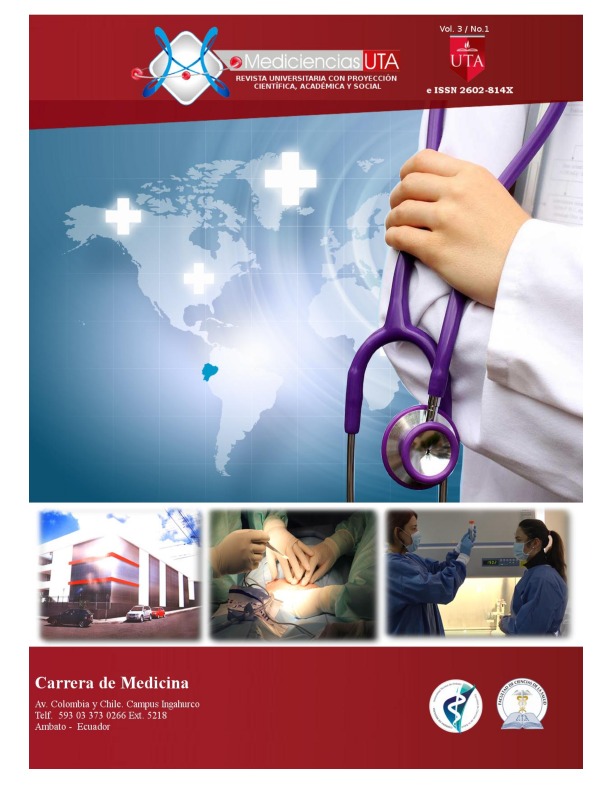Risk factors and therapeutic adherence in patients infected with Human Immunodeficiency Virus in Cotopaxi, Ecuador.
Main Article Content
Abstract
Introduction: Ecuador ranks among the five countries in Latin America with the greatest transmission of HIV. UNAIDS statistics in 2017 showed an increase, 33,000 plwha in Ecuador, of which 32,000 are adults aged between 15 and 49 years: 9,900 women and 22,000 men. The novelty of this research is given by the identification of risk factors for HIV infection and estimation of the therapeutic adherence of infected patients, in one of the most populated provinces.
Objective: : To evaluate the predisposing factors to the infection by the human immunodeficiency Virus and adherence to antiretroviral treatment in patients in the province of Cotopaxi in Ecuador.
Material and methods: observational explanatory study of Prospective cohort. The population was made up of all patientsdiagnosed with HIV who were treated at the HIV clinic at the Latacunga Provincial General Hospital during the period September 18, 2018 to September 18, 2020. The sample was composed of 80 new cases of HIV infection that were diagnosed from September 18, 2018 to December 31, 2019, agree to be included in the investigation.
Results: Predominated the male sex in 97.1%, the mestizo race in 100%, The age group of 35-45 years in 52.8%, the employment status employed in 42.5% and secondary schooling in 54.4%. Among the predisposing factors for infection: the number of sexual partners greater than 2 in 92%, sexual preference bisexuality 58%, the homosexual preference in 25.2% of people deprived of freedom, the time of detection of the infection was greater than 3 Years at 54.5%. In terms of toxic habits: the alcohol habit in 12%, the smoking in 52%, the CAFFEIC in 78% and the drug addiction in 12%. The predominant therapeutic scheme in 95.2% of patients includes Tenofovir + Efavirenz + emtricitabine, the main cause of change was resistance. The causes of non-adherence therapeutically identified are: Accessibility and availability of treatment, remoteness of the pharmacy, cost of transportation.
Conclusions: In the demographic aspects it was evident that predominated: The male sex, the Mestizo race, the age group of 35-45 years, the employment status employed and the secondary schooling. With regard to the factors predisposing to HIV infection, it was found: the number of sexual partners greater than 2, the bisexuality and in the case of persons deprived of freedom homosexual preference, the time of detection of the infection more than 3 years and in (e) Toxic habits: addiction to alcohol, coffee, tobacco and drugs. The combined therapeutic Scheme (Tenofovir + Efavirenz + emtricitabine) predominated, the main cause of change was resistance, most patients consider that the treatment has improved their quality of life. The causes of non-adherence therapeutically identified are: Accessibility and availability of treatment, remoteness of the pharmacy and cost of transportation.



